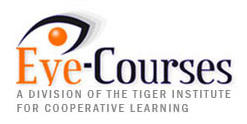Anterior Segment

Course Overview
This course is intended for beginning, intermediate, and advanced levels.
After completing this section the student should be able to do the following:
- List the structures that make up the anterior segment
- Identify important elements about each of the 5 layers of the cornea
- Describe the normal endothelial cell count for a healthy cornea
- Explain the 2 purposes of the cornea
- Identify normal and abnormal cornea size and thickness
- List common problems that affect the cornea
- Explain different treatment methods for common corneal problems
- List the 2 important structure and fluid found in the anterior chamber
- Compare the composition of aqueous humor to blood plasma
- Identify the 2 parts to the ciliary body
- List several common problems that affect the ciliary body and the angle
- Explain how the iris muscles relate to pupil size
- Describe pupil response/ reflexes
- Explain how to perform the swinging flashlight test
- Explain what normal pupil reaction versus an APD looks like on the swinging flashlight test
- Describe ways to document pupil function testing
- Identify several characteristics for certain pupil problems
- List the layers of the lens
- Describe several common problems that affect the lens
- Identify ways to characterize cataracts
- Describe different methods of cataract removal
- List tests that are important in the process of cataract evaluation
Here is what some ophthalmic personnel who took this course had to say:
“I thought the material was presented very well” N.P., COT
“I found the material to be level appropriate and very easy to understand- ” C.O., COA
This course should take approximately one hour to complete.
You
must correctly answer at least 18 of the 22 questions on the open book
post test. If you do not successfully pass the post test the first time you may try
again at no expense to you.
